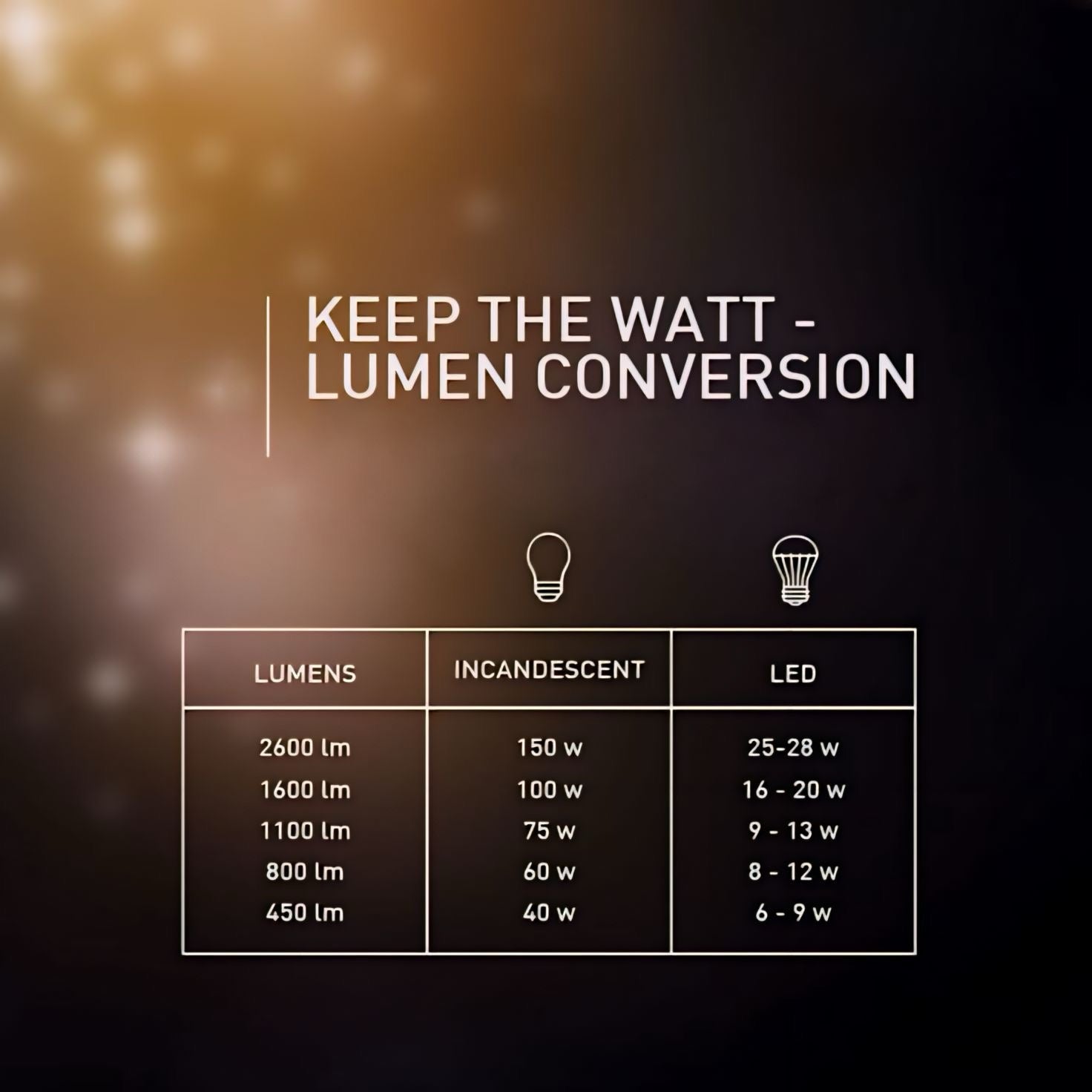
Watts and lumens, what's the difference?
Watts vs. lumens: the essential difference in the world of lighting
Hello, dear readers,
Today we're taking some time to delve a little deeper into the world of lighting. We all know the moment when terms like watts and lumens come up and you wonder exactly what they mean in terms of actual brightness. In this article, we will take a closer look at this topic with the aim of ensuring that you are fully informed the next time you visit the lamp store, so that nothing stands in the way of your next lamp purchase.
Focus on watts: more than just energy consumption
Paying attention to watts means more than just looking at the energy consumption of a lamp. Traditionally, watts have often been equated with brightness, but this relationship has changed with advanced technologies. A higher wattage does not necessarily mean more light. Modern light sources such as LEDs can produce impressive brightness with lower energy consumption. Therefore, it may be advisable to focus more on more precise metrics such as lumens when determining whether a light source is bright enough for the desired application. Fortunately, most lamp manufacturers state lumen output transparently on the packaging, although unfortunately this is not the case for 100% of lamps. We will go into more detail later on how you can estimate the approximate lumen output if only the wattage is stated on the lamp packaging.
From theory to practice: the importance of lumen
The theory of lumens, as a unit of measurement for the brightness of a light source, becomes a decisive factor in choosing the right lighting in practice. Lumens give us a precise idea of how bright a lamp really is, regardless of its wattage. In other words, this means that this figure provides concrete information about how brightly a room is illuminated, which can be particularly important in different rooms and situations. For example, a lamp with higher lumens can provide optimum lighting conditions in a study, while softer, moderate lighting is preferred in a living room to create a cozy atmosphere. An understanding of the importance of lumens enables you to adapt the lighting in your rooms precisely to your needs.
Practical tips: Finding the right balance
The trick is to find the right balance between brightness and energy consumption in order to achieve optimum and efficient lighting of the room. A good first step would be to carry out an analysis of the natural lighting conditions in your rooms, for example, to create an initial basis. How much natural daylight is available? Does the room have large windows? How many square meters does the room have? etc. It often makes sense to use dimmable light sources where possible or to use different light sources to ensure the necessary flexibility. It is best to adapt the lighting to the activities in the room, for example warm light for cozy evenings and brighter light for concentrated work. Intelligent lighting controls (smart home) can also help to optimize this balance and minimize energy consumption.
Converting watts to lumens: A practical guide
As briefly mentioned above, it can happen from time to time that the lumen rating is missing on certain lamp packaging. It is also possible that you will not find this information straight away when shopping online. When it comes to converting watts into lumens, there is a rough rule of thumb:
|
LUMEN |
Incandescent lamp |
LED |
|
2600 lm |
150 W |
25-28 W |
|
1600 lm |
100 W |
16 - 20 W |
|
1100 m |
75 W |
9 - 13 W |
|
800 lm |
60 W |
8 - 12 W |
|
450 lm |
40 W |
6 - 9 W |
Please note that this conversion may vary depending on the lamp type and technology. If in doubt, it is worth checking the manufacturer's specifications or seeking professional advice. This way you can ensure that your lighting meets your individual needs.
Light in everyday life: application in various scenarios
Light plays a crucial role in our daily lives and influences our mood and our activities in various scenarios. In the living room, warm, subtle light sources create a cozy atmosphere for relaxed and unhurried evenings. In the workplace, on the other hand, bright, cool light is conducive to concentration and productivity. In the bedroom, soft light is recommended for a calming effect. The targeted adaptation of lighting to the respective situation not only contributes to well-being, but also creates a pleasant and functional environment for various everyday activities.
Concluding thoughts: Clarity and perspectives
Finally, we would like to emphasize that a good understanding of terms such as watts and lumens is very important in order to make informed decisions when choosing lighting.
A look into the future of lighting also reveals exciting developments that will certainly have sustainable aspects. With new technologies such as energy-efficient LEDs and intelligent lighting systems, lighting is becoming increasingly environmentally friendly, efficient and adaptable for the end user.
Thank you for your interest in our blog post. If you have any further questions or would like more in-depth information on the subject, please do not hesitate to contact us via the contact form or atbuynblue.
Your future lighting experience is always close to our hearts. See you soon and all the best!


